Dancing for democracy at Rio Carnival

As Brazil’s epic street party returns in full for the first time in three years, revellers aren’t just celebrating its comeback. They’re also partying away the division and despair of the Bolsonaro years.
Society
Words & photography: Henry Young
Hundreds of thousands of people are on the street, marching to the beat of the same, cacophonous, city-wide drum.
On this block alone, strangers with wide-eyed smiles embrace like long-lost lovers, skewered meats are frantically exchanged for fistfuls for banknotes, a dreadlocked Spider-Man surveys from above. Around the corner, a purpose-built arena in the heart of the city, over half a kilometre in length, is filled with revellers as far as the eye can see and the ear can hear. Most won’t be home much before dawn.
Welcome to the Rio De Janeiro Carnival. The greatest show on earth – or, at least, the world’s biggest street party – is back in Brazil in its full glory for the first time in three years. And, with the recent replacement of far-right Jair Bolsonaro by the Workers’ Party’s Luiz Inácio Lula da Silva in the country’s presidential elections, it’s taking place at a time of huge political change in the country.
As night falls with slashes of lightning and a thunderous rumble from above, the revellers making their way to the Sambadrome – the official name of the city’s 90,000 capacity parade space – are in the grips of feverish excitement. Friday 17th February marked the official start of the first full pre-Lenten Rio Carnival since 2020, an eight-day bacchanalia that reaches a giddy climax this weekend.
“After years of hardship, it’s going to be a huge party,” says Renata Rodrigues, founder of Mulheres Rodadas, a feminist bloco that formed in response to a viral post from a young conservative group denouncing “women who get around”. She draws parallels with the scenes of 1919, when the city celebrated the end of both World War One and a yellow fever outbreak for an entire three months. Talk about history-making.
“This is the Super Bowl of samba!” shouts Thales Browne, a prominent local saxophonist and self-styled “cultural agitator”, who cut his teeth as one of carnival’s thousands of vendors and now spearheads a number of alternative events all over the city.
The hyperbolic excitement is understandable. In 2021 these streets lay empty as Covid ravaged the nation, with Bolsonaro rivalling his northern hemisphere counterpart Trump in his slack response to the outbreak. To date, more than 10 per cent of all deaths caused by the virus worldwide – some 698,000 – have occurred in Brazil.
Then, last year, Carnival was blighted again by Covid-necessary postponements. The result was only a partial resumption of festivities. The Escolas de Samba – “samba schools”, each with a different history, tradition, look and choreography – paraded in April but authorities controversially claimed there “wasn’t time” to sanction the beloved blocos (street parties) of the Carnaval de rua. Private events and balls were given the all clear, just as long as you could stump up a vaccination passport and the sizable entrance fee. People worried that Carnival was forgetting its democratic roots and becoming increasingly elitist.
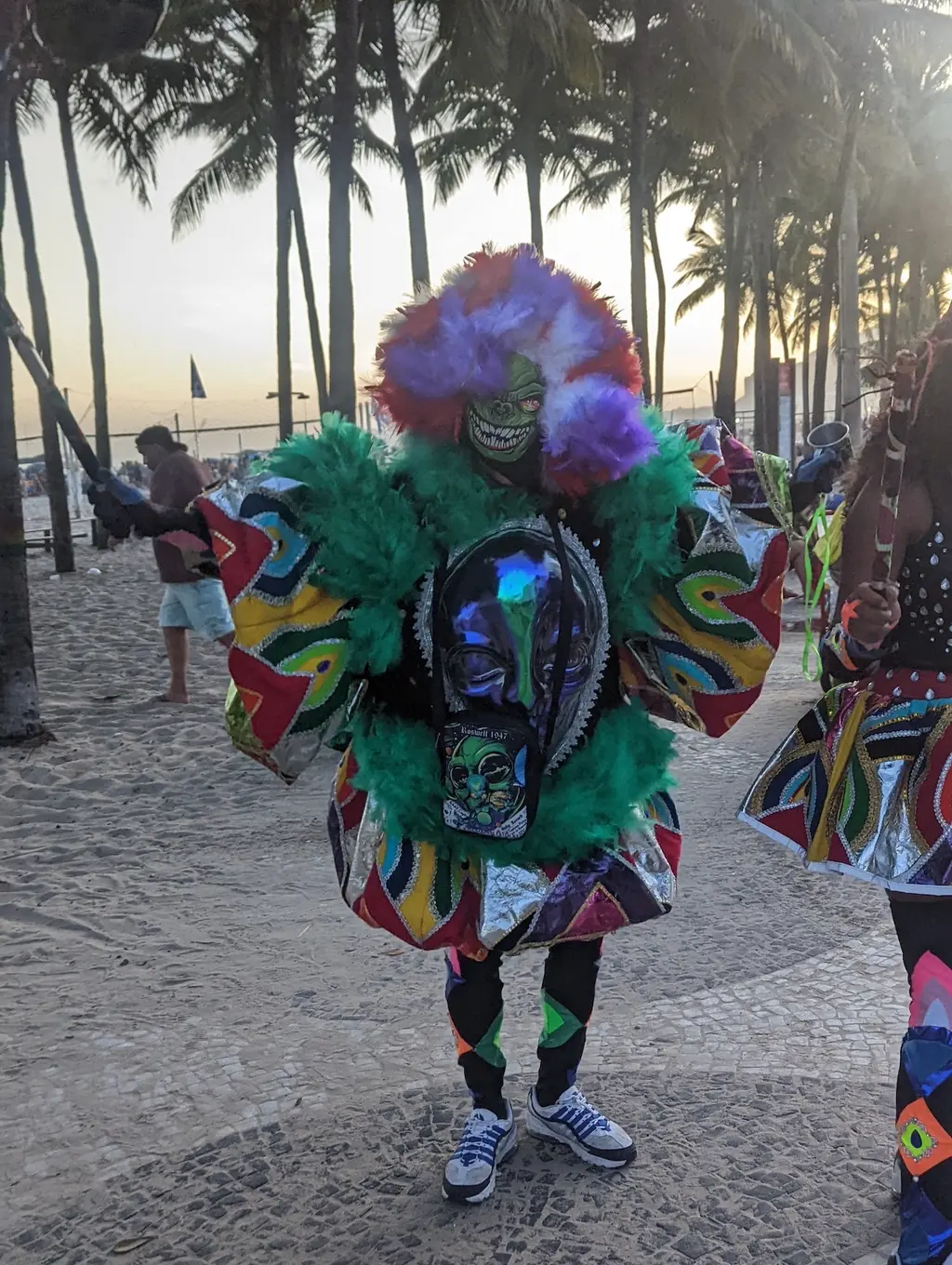
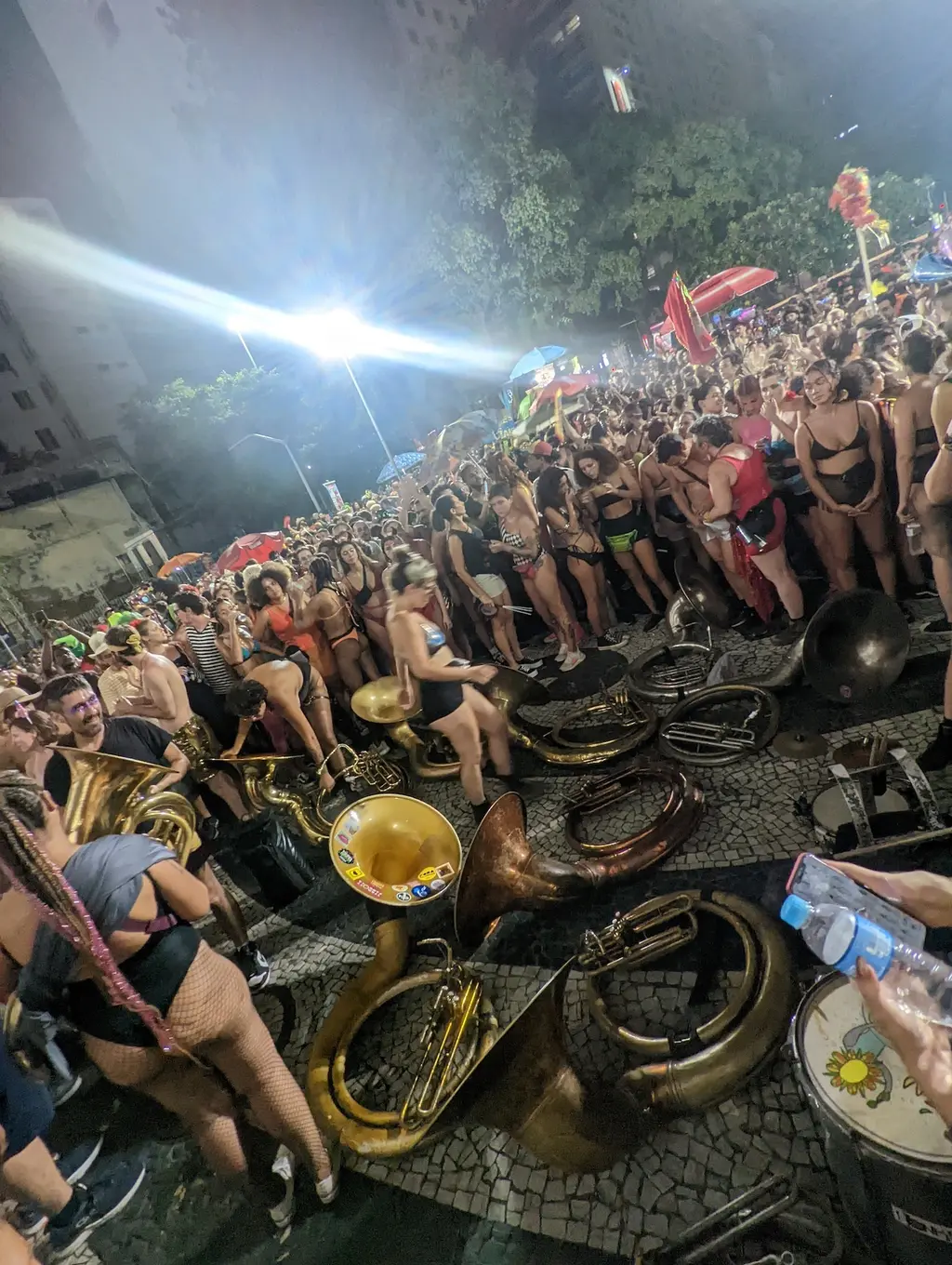
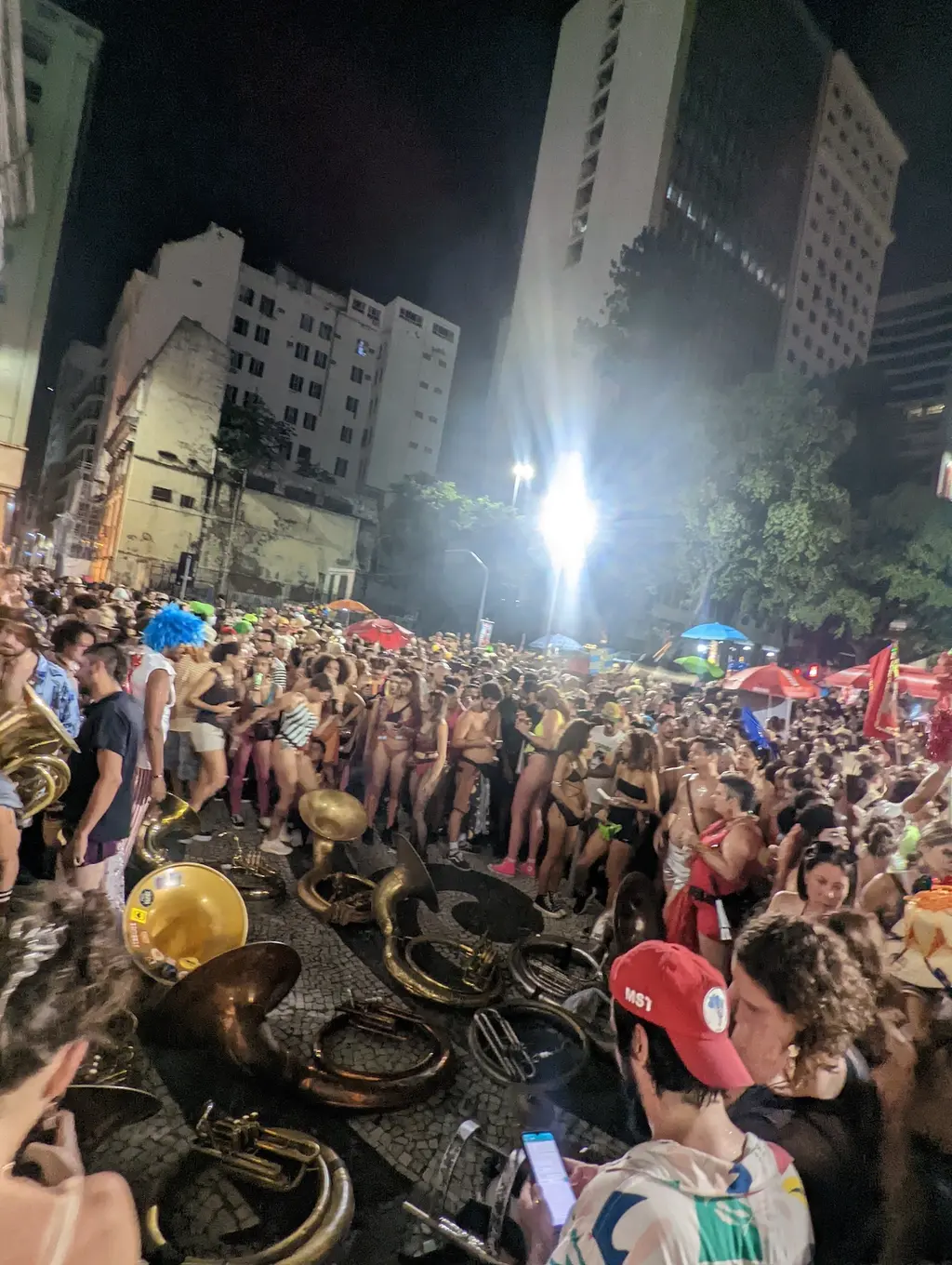
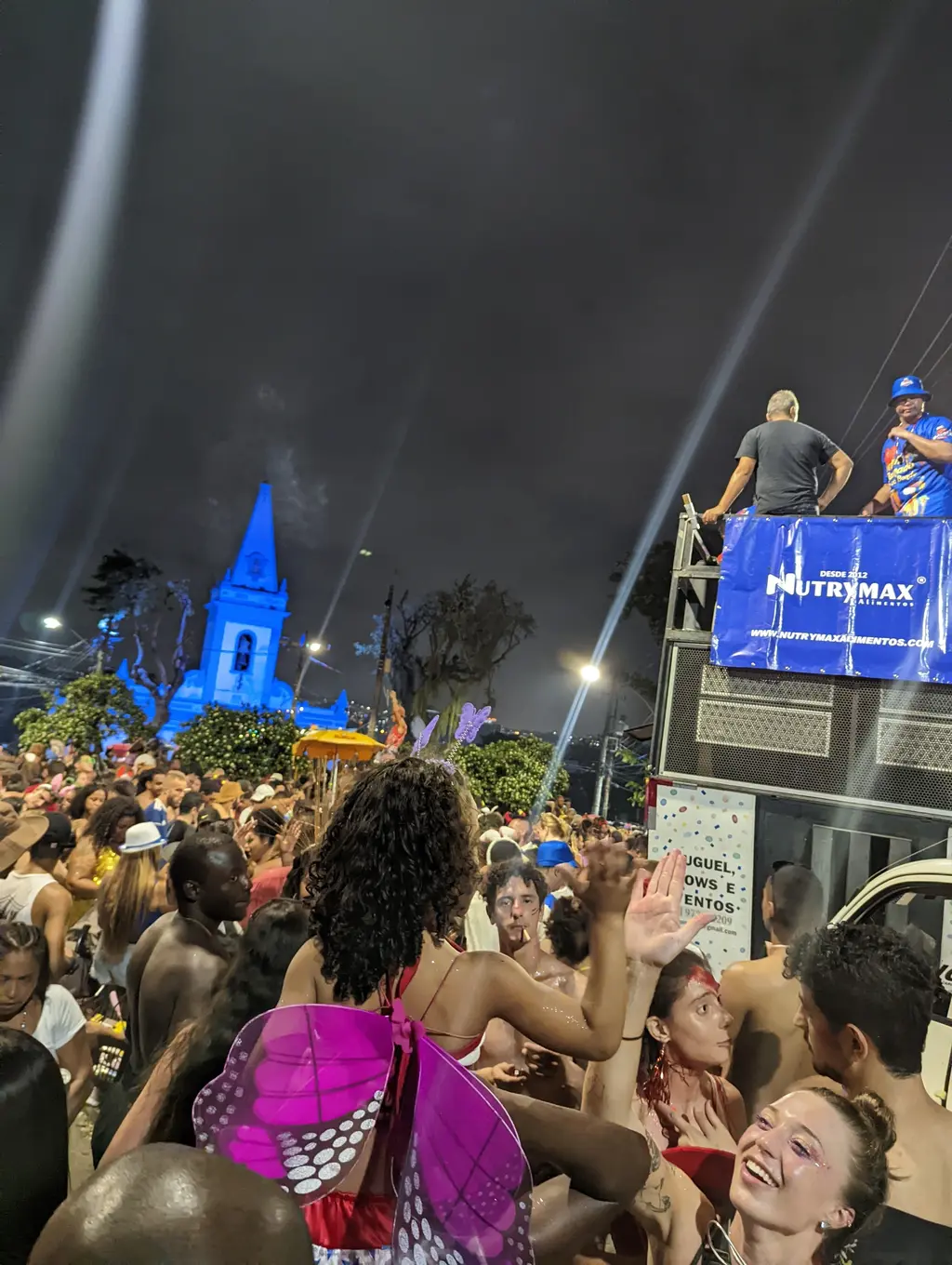
This week, though, as plastic cups of mouth-numbing cachaça de jambu liquor are passed around and sweaty bodies sway in the falling rain to an all-encompassing swirl of samba music, there’s no sign of that.
Entering the Sambadrome you’re assaulted with sound and colour, as Rio’s premier Escolas de Samba parade down a 570 metre stretch overlooked by towering concrete bleachers designed by the celebrated modernist architect Oscar Niemeyer.
Up first at 10pm on Friday is Arranco. The samba school is commemorating its 50th anniversary with a celebration of Carnival’s African roots and the life of Sambista Zé Espinguela, esteemed founder of 20-time LIESA league champions Mangueira, one of the most popular samba schools in town.
Over the ensuing five hours, the various schools honour disparate themes, from the dreams of a young boy born in one of the city’s North Zone favelas to cross-dressing counterculture icons of the past.
“Carnival has always been a time for subversion and transformation,” says Roberta Rodrigues, a languages teacher with a side hustle selling nipple tassels to carnival goers. “It’s a chance to let go of routine, rules, roles. I believe that by living your Carnival self you gain a unique perspective on your normal, boring self. To me, it’s an essential ritual and without it the year is never the same. It’s my New Year!”
Saturday. The fireworks have not long ceased, allowing the city a couple of hours of fevered sleep until the rumble of drums resumes at 6am.
A new dawn brings another day of revelry for the blocos, of which there are now over 500 in Rio. These free, sometimes clandestine street parties have no fixed form and take over large swathes of the city throughout the broader Carnival month.
“Carnival represents several things,” explains Fabiano Lacombe, a musician and author who has sung with the Exalta Rei bloco, a group celebrating the music of Brazilian icon Roberto Carlos. “In the foreground is a form of conviviality and meetings – a collective form of celebration that has music as its guiding thread. But there is still a political sense in the occupation of public space.”
Many of these gatherings go ahead without permission from authorities. “Carnival is not a social event that depends on a permit from the government,” read a manifesto signed by over 100 different blocos last year. “It is a popular expression and a historical right conquered in the struggle. The street belongs to the people and our voice is free.”
And in this new dawn for Brazil, that occupation feels more vibrant than ever. On Sunday, over the course of seven hours, the followers of the renowned Boi Tolo bloco shuffle to the beat all the way from Candelária Church to Copacabana beach, taking over all four lanes of the Túnel Novo (freeway underpass) before plunging gratefully into the six-foot waves.
“It is like a river in the streets,” says Franco-Brazilian singer Pàula Margaux Devismes, dancing past me as the bloco suddenly moves from a standstill to a mad dash. “There’s no sense trying to go upstream. When you lose your friends, you find yourself.”
But amid the scenes of revelry, hope and ostensible harmony this year lies a divided nation.
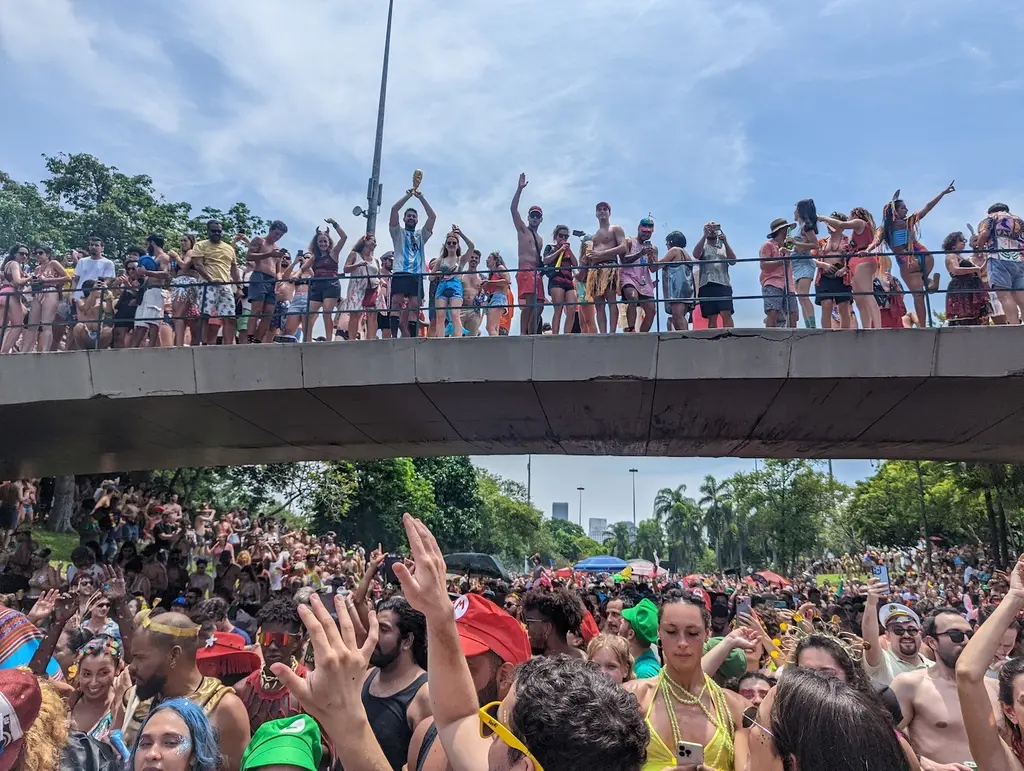
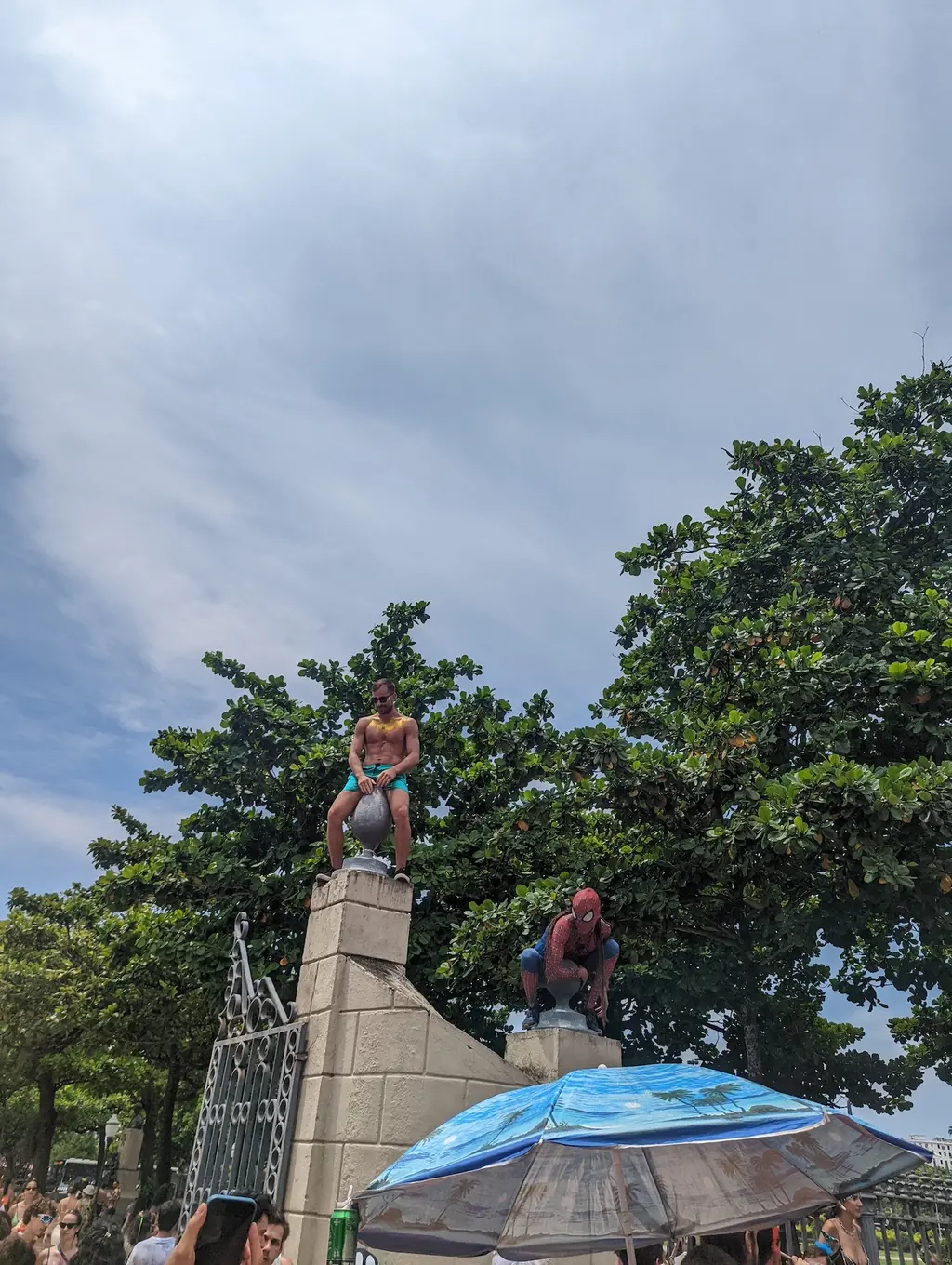
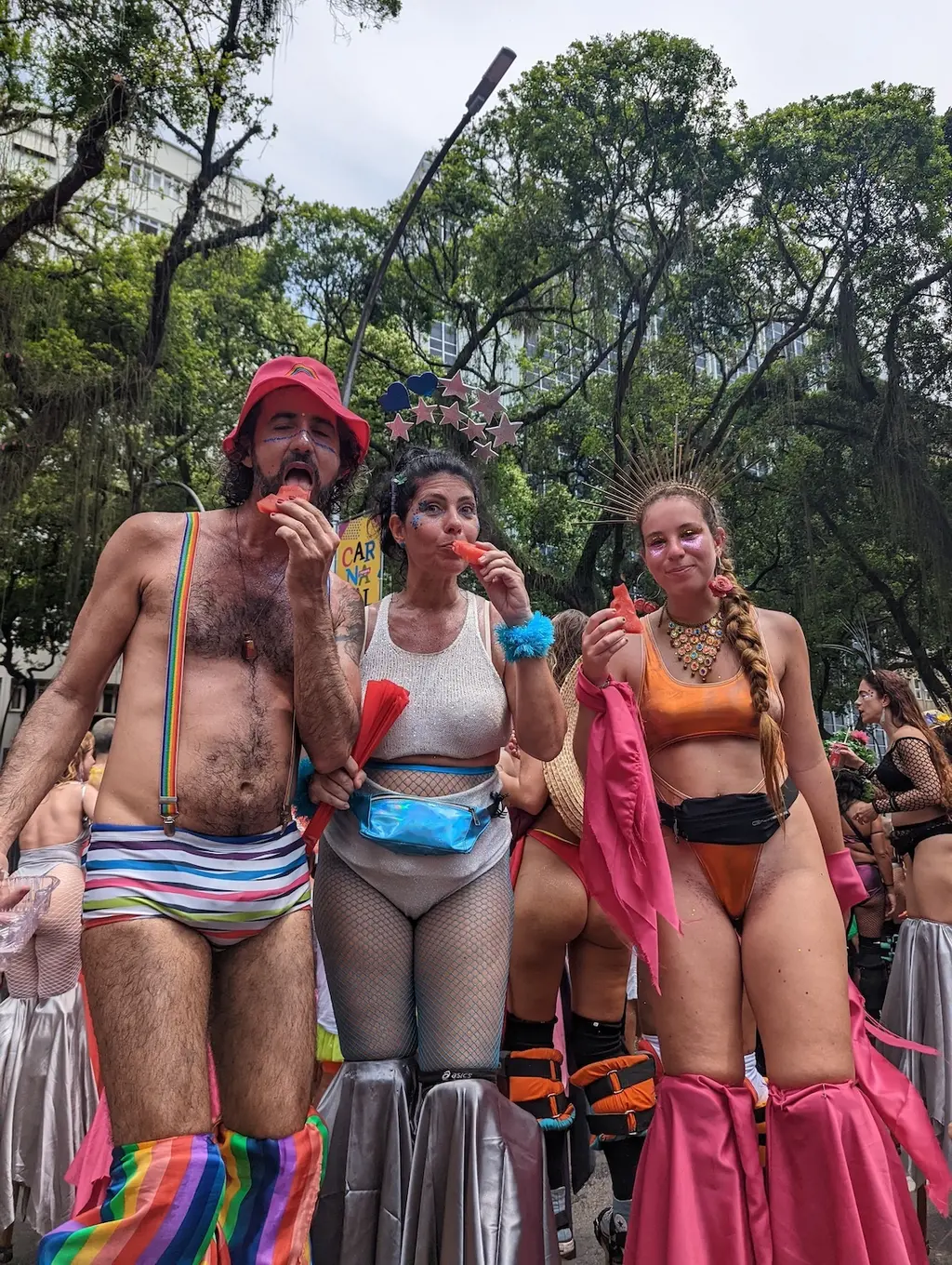

On 8th January, as Rio’s Sambistas were putting the finishing touches on their costumes and routines, another gathering was taking place 700 miles away, in the capital, Brasília. A swarm of yellow and green mounted the curving white slopes of the National Congress in scenes from the playbook of the US Capitol insurrection, trampling all over not just a modernist architectural gem but a beacon of Brazilian democracy.
These were the Bolsonaristas, die-hard followers of the outgoing president. Many repudiated the validity of the recent election. Some called for military intervention. Others were there just to opportunistically ransack and destroy.
The fallout continues. Some 1500 arrests have reportedly been made – among them Brasília’s former public security chief for alleged collusion with the rioters – while the head of the army has been dismissed.
Veteran leftist Lula, the 39th president of the world’s fourth-biggest democracy, has promised to govern for all 217 million of the population, insisting that “there are not two Brazils… but one great people.” However, he was only elected by the slimmest of margins: 49.1 per cent of the turnout marked their cards for Bolsonaro.
It’s not only the polls that are split. In the wake of January’s riots, Lula seemed not even wholly assured of support from his own staff, asking reporters: “How can I have someone at the door of my office who might shoot me?”
It all makes for quite a backdrop to Carnival’s long-awaited return. Can a nation so recently divided in the polling booths, blighted by anti-democratic riots in the capital, truly walk together on the streets this February?
Few are more recognisable in the crowd than Federal Deputy Tarcísio Motta. The politician is a committed Carnival-goer and not shy of an elaborate costume.
“At this time, we can be whoever we want to be in an ironic, critical or simply poetic way,” says the Socialism and Liberty Party member, who also serves as President of the Carnival Special Committee. “Wearing a fantasia and going out into the streets of the city is to subvert the hard reality we live in and redo the steps of blocos, schools and other carnival demonstrations of the past.
“In doing so, Carnival opens the possibility for people to realise that life can be different, that we can play even when we are adults. That we can love even in times of violence. That we can be pirates, clowns, dancers or princesses and sing the sorrows and joys of life through the streets of the city. The same city that oppresses desires and controls time.”
Motta personally experienced the invective of the Bolsonaro clan in 2016. The then-president’s son, city councillor Carlos Bolsonaro, tweeted a picture of Motta wearing a pink dress at a bloco alongside the derogatory caption: “Is that what you want governing and educating your city?”
For Motta, the “defenders of the order” seek to scandalise these moments of freedom and subversion precisely because they feel threatened.
“They cannot live with a joy other than their own in their private world. The joy of Carnival, in turn, is public, made on the street for everyone to see and live together. This makes conservatives tremble with fear, since to change life, you first need to feel that it can be different.”

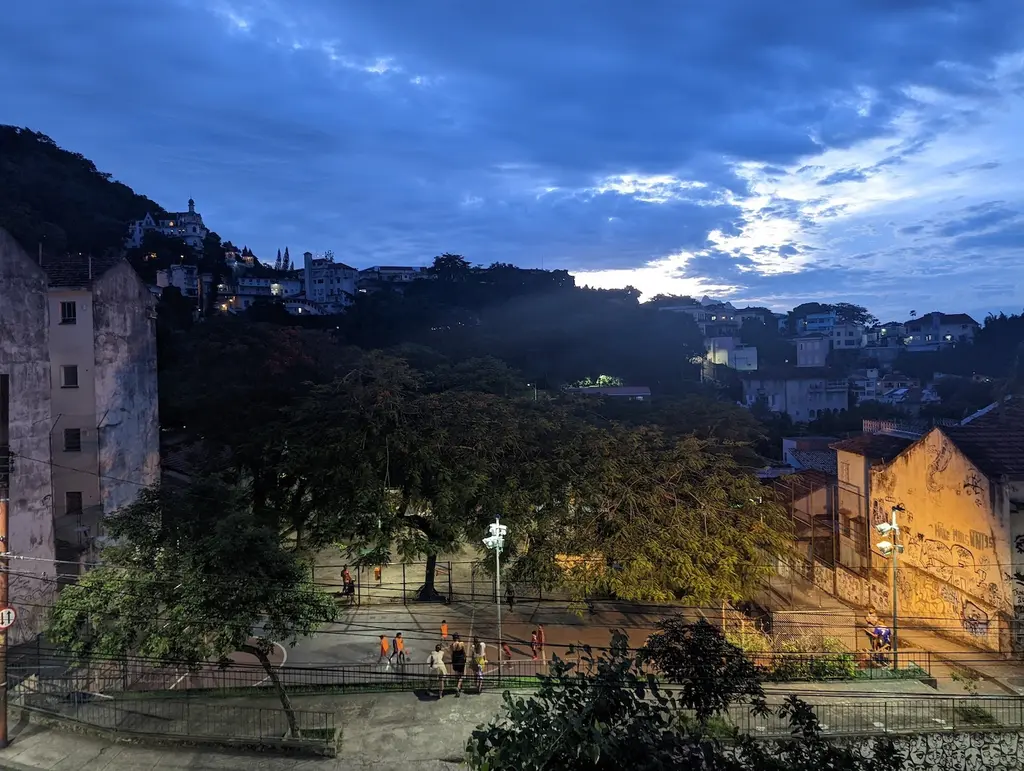
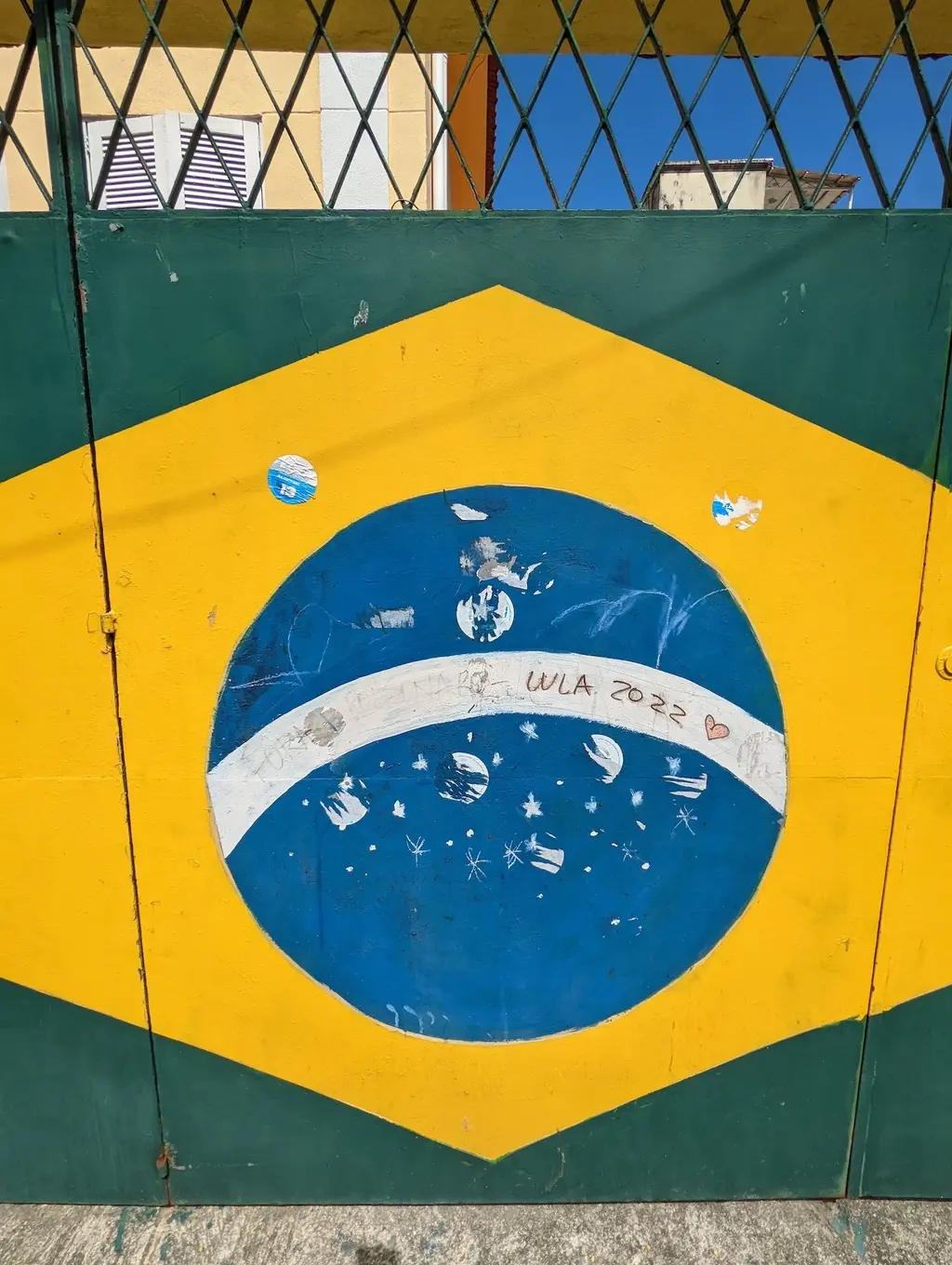
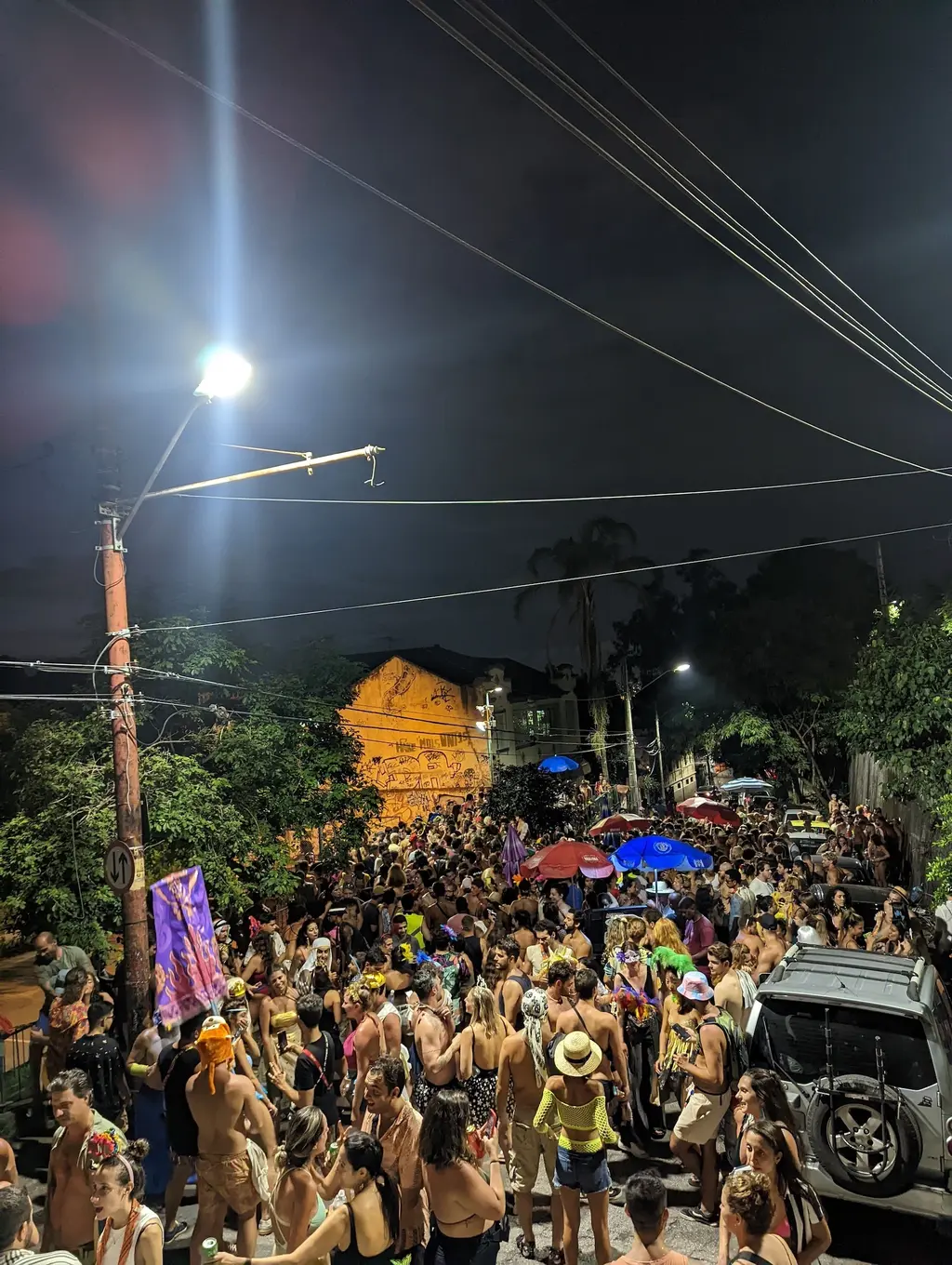
Crowds converging on Friday morning’s Prata Preta bloco pass the Eastern Military Command, which was one month ago the scene of an encampment of Bolsonaristas urging the army to intervene and overthrow the government. This morning, a teenage girl on a pink bicycle, Isis Toretto, peddles soft drinks while holding a sign saying “Invista em mim”: invest in me.
Up in Santa Teresa, where Portuguese colonial mansions of crumbling grandeur nestle alongside the patchwork of favela, the heaving crowd at the Céu na Terra bloco is one of many that breaks out into a spontaneous pro-Lula chant followed by rapturous applause.
Watching is Pedro Padro, a photojournalist based in Rio. He spent the early hours of today practising a ritual taught to him by a Candomble Pai de santo (Father of Saints) in Bahia, covering his body with eight eggs, eight white roses and eight metres of white silk while facing the ocean. By noon the only thing on him is sweat and glitter.
“I feel like I’m out of a nightmare,” he says with a grin, bobbing along to the rhythm of Prata Preta on Rua do Propósito. To him, January’s protests by the Bolsonaro mob were nothing more than the death-rattle of a depleted political force. “Another four years of Bolsonaro? Impossible.”
On Rua Francisco de Castro, as the Desca ma Nao Sobhe bloco ripples down the road, a young woman steps aside from the meandering procession for a moment to paint a message in large red script on the wall: “MULHER DA VIDA”. She’s reappropriating a pejorative term for a prostitute to claim its literal Portuguese meaning: “woman of life”. Beside the graffiti, two strangers kiss; a clammy man dressed up as a friar lights a joint; a heavily pregnant woman sways to the rhythm.
This is Carnival and nothing is taboo. Nothing, that is, apart from one thing: barely anyone is wearing the usually omnipresent yellow and green of the Brazil national football shirt. Having been appropriated by Bolsonaristas, these colours no longer fly.
“The Bolsonaro government represented an explicit opposition to street parties,” explains Lacombe, who’s soon publishing a book on the peripheral carnivals of Rio. “The unofficial blocos, which have as their [purpose] the occupation of the streets, claiming the ‘right to the city,’ are almost entirely composed of progressive people. These groups can be defined as ‘artivists’, a self-explanatory neologism. Feminist, anti-racist and anti-homophobic agendas are defended either through speech, musical repertoire, performance or clothing.
“It is not possible to say that conservative voters are all sheltered at home,” the musician and author continues. “But it is likely that this progressive characteristic makes most groups celebrate Lula’s victory and Bolsonaro’s defeat.”
Roberta Rodrigues, the tassels-selling teacher, offers a more succinct take on the subject. “Nazis and terrorists are not fun-loving people,” she says with a laugh. “They never come out to play.”

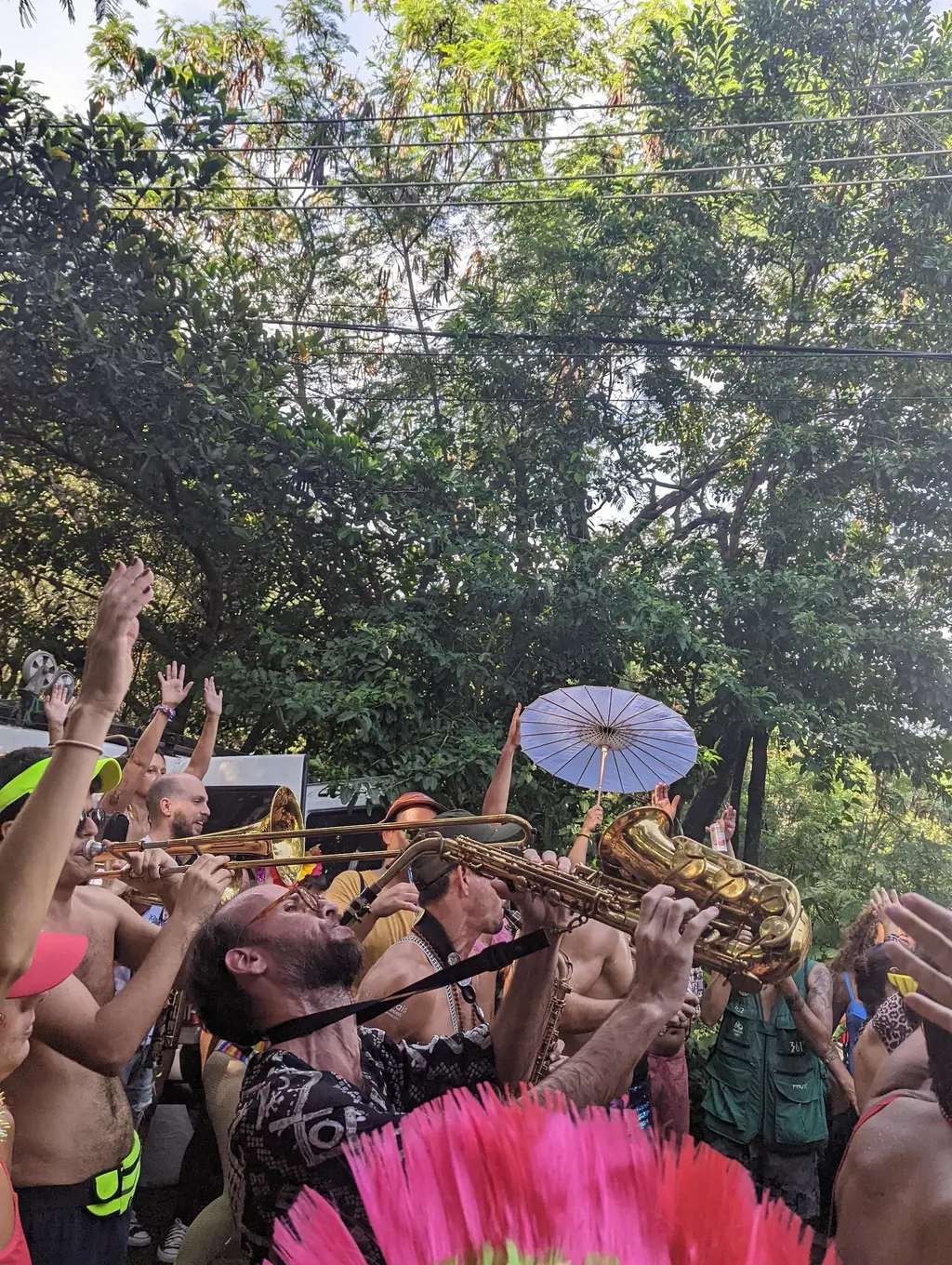
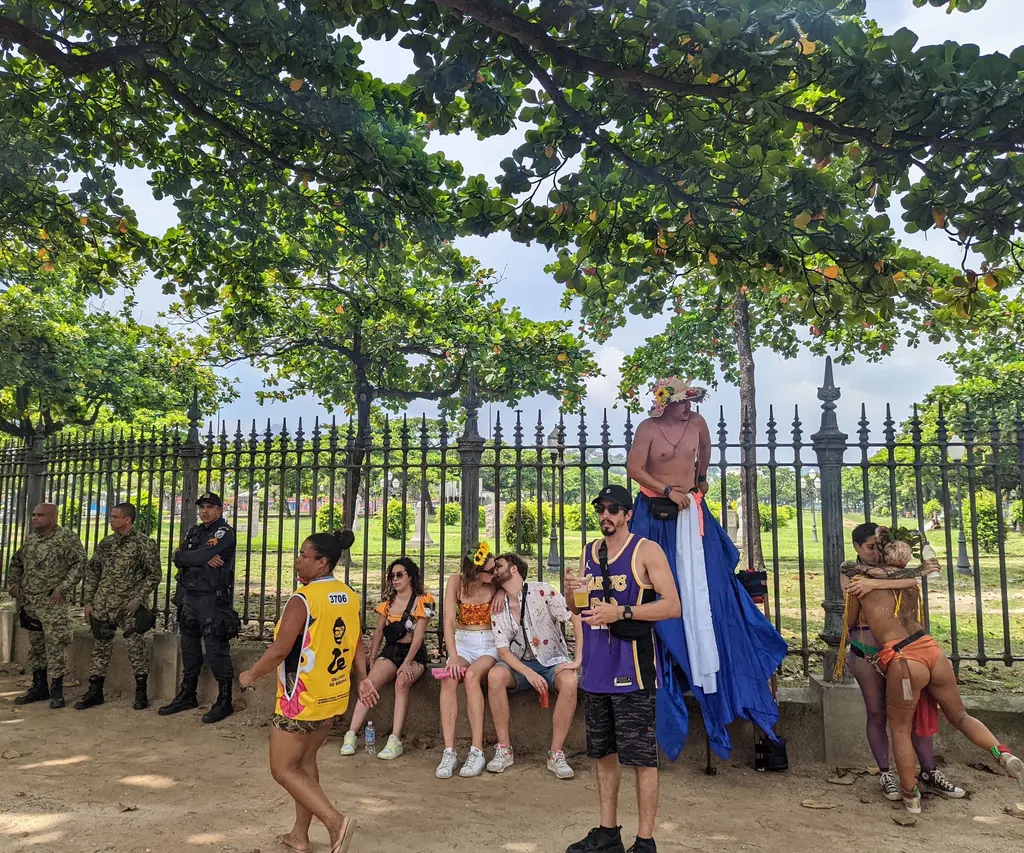
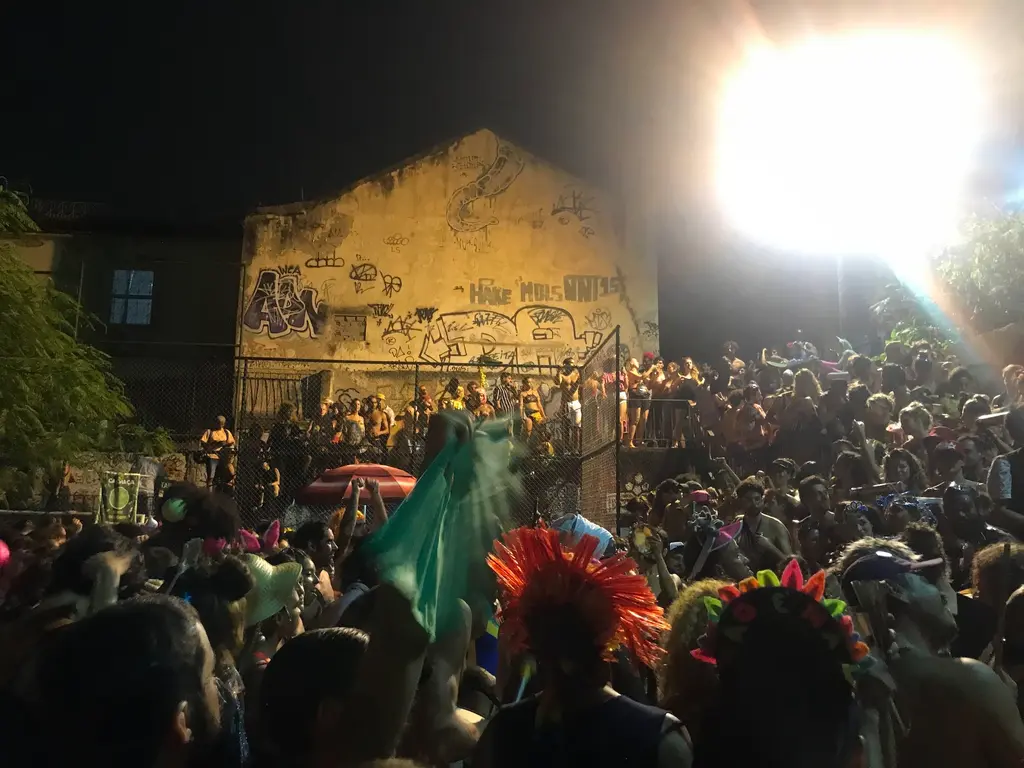
But it’s not just in 2023 that Carnival is throbbing with an undercurrent of dissent. Despite its reputation amongst Western and Northern Hemisphere observers for unbridled colour and jubilation, there have been increasing undercurrents of protest in recent years – notably since Bolsonaro campaigned for, and then won, office.
In 2019 at the Sambadrome, Mangueira celebrated “the nation that’s not in the portrait”, reframing – and reclaiming – the political debate in the song that they had, according to samba school tradition, composed for that year’s parade. The illustrious samba school replaced the Brazilian flag’s inscription of the motto “Order and Progress” and paraded one in its own green and pink colours, championing the “Indian, Black and Poor”.
Its lyrics (“Since 1500 there have been more invasions than discoveries”), booming out of huge Sambadrome speakers as they paraded, alluded to the arrival of Pedro Álvares Cabral, the Portuguese who “discovered” a land already populated by indigenous people. Mangueira’s theme also paid tribute to the recently murdered city councillor Marielle Franco. An activist from the favelas who fought police brutality, her campaigning resulted in a bullet in the head.
That year Mangueira were crowned champions and awarded a perfect score of 270/270 by the LIESA judges. And that night, Tarcísio Motta walked alongside Franco’s widow with the samba school. Looking back, the politician describes it as “a cry of denunciation sung at the top of the lungs during one of the most important cultural shows on the planet.”
Four years on, as Carnival reaches its closing weekend, it’s clear another significant cultural manifestation is taking place: to party in the face of recent political adversity and reclaim a part of the Brazilian self that’s been quietened but not defeated.
“It’s not even a case of saying ‘Fuck Bolsonaro,’” says Michelle Carneiro, stepping aside from the throng in Santa Teresa with her gold-sequinned friend Andre Emidio. ‘It just feels so good to not have to worry about politics 24/7 anymore.”
Writer, historian and composer Luiz Antonio Simas, well-versed in the minutiae of Carioca (anything related to Rio), makes a distinction between between the “horrors” of the state – built on slavery, even now perpetuating inequality – and the culture that grows in spite of it. “It is disturbing to a certain Brazil – individualistic, exclusionary, locked up – to deal with a collective, inclusive, cheerful, diverse street party. The only thing that can save Brazil,” he concludes, “is Brazilianness.”
Like green shoots emerging from the cracks of a great wall, the transgressive, defiant, celebratory elements of Brazilian culture become incarnate in the Carnival. It’s for these reasons that Renata Rodrigues, shuffling her feet to the sounds of a group called Samba Volta, believes 2023 will be “special” for Brazil.
“We surely have had a few hard years and lots to mourn, [because of] all that the previous government has managed to destroy,” she says, her face a surrealist picture in white, red and blue makeup. “We may not be able to bring back everyone who died during the pandemic, all the journalists that were murdered – like Dom Phillips and Bruno Pereira – or the destruction in our biomes and indigenous lands. But by going out and ‘playing the Carnival’ we might, just might, come out a little stronger to face the year ahead.”
One week into Carnival 2023, as the festivities reach a peak and the giant cleanup operation begins to kick in, some conclusions emerge from the chaos.
A significant portion of time at Carnival is spent in a state of flux, not knowing where you are or where you’re going. At times in the blocos you’re lifted off your feet and carried forward in the writhing crowd. Night, even in the clutches of a few hours of fitful sleep, is a continuation of the Carnival. There is no escape, as the hourly burst of fireworks from the Sambadrome serve to remind all who live within a three-mile radius. They cease at approximately 6am – precisely when the first blocos begin to gather.
And so another giddy Carnival morning begins.
“The power of Carnival is in its ability to affirm another possible world,” concludes Tarcísio Motta, donning a blue dress and yellow wig, ready to join the party. “The Bolsonarist society project tries to make people get used to life as it is today, to settle down and not complain about exploitation and oppression, to accept injustices as something normal. Carnival opens up the absurdity of this ideology, by remembering that we can be free and happy in diversity.”
Last October, Brazil narrowly defeated Bolsonaro in the polls. This February, by the beat of the drum, a dancing procession is overcoming the spectre of Bolsonarism on the streets.
The Greatest Show On Earth is back.
Carnival continues until Saturday 25th February. If you’re quick, or local, you might just catch it…

















